With thousands of teachers using Zinn Education Project lessons each year, we hear amazing stories about the impact these lessons have in the classroom. Here are just a few from this year.
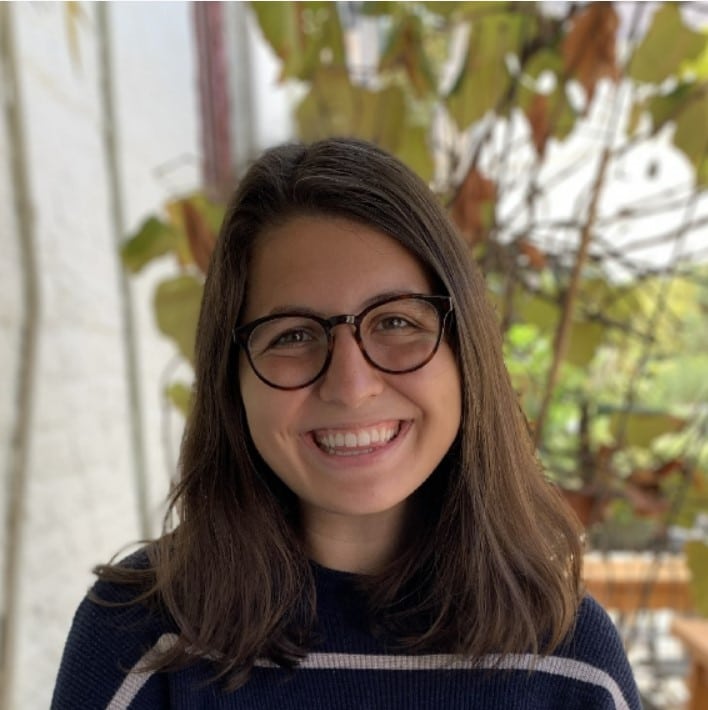
I executed the COINTELPRO: Teaching the FBI’s War on the Black Freedom Movement activity with my 9th grade U.S. History students. They were engaged and enraged; curious and collaborative; eager to learn more and hungry for justice.
To activate their interest, I spent the first class period showing the Freedom Archives’ COINTELPRO 101 documentary. The documentary starts by exposing the COINTELPRO operations that successfully infiltrated the Puerto Rican independence, Mexicana, and Native American liberation movements and led to the incarceration and death of many activists. Since I teach a majority Latinx student population, they were immediately hooked.
The next day, we dove into the document analysis activity compiled by Ursula Wolfe-Rocca. After going over key terms and background information (as suggested by Wolfe-Rocca in the PDF version of the activity), I arranged my students in groups of four and they investigated six of the included documents. For the full 90-minute block period students discussed, jotted down notes, and exclaimed in both horror and shock as they learned about a sliver of our country’s hidden history.
Unsurprisingly, many students were able to connect COINTELPRO to present day. Several of them bravely brought their own familial and personal experiences into class discussion. They shared stories of wolves in sheep’s clothing, covered by titles of police officer, government official, social worker, friend, or teacher, who had in some way or another sabotaged their family’s safety or livelihood. Per Wolfe-Rocca’s suggestion, we ended the class period as a group and candidly discussed both the risks of resistance and the importance of it.
Paradoxically, teaching people’s history leaves more room for hope than any other educational framework. When students are given permission to explore the whole truth without frills, we can discuss solutions in the form of direct nonviolent action and civil disobedience that actually mean something in the real world.

I currently teach U.S. History I and II to 10th and 11th graders, respectively. We wrapped up our semester this week by holding midterm exams. In lieu of a traditional exam for one of my U.S. History I classes, I had them complete the Zinn Education Project activity “How We Remember.” I had read Clint Smith’s book last year and was blown away by how the history is handled at many of the highlighted locations and his extreme attention to detail.
I’ve since used excerpts from Smith’s book in class, but this activity really had the students use the text in a way that required them to interact with the sites, as well. The commemorations were thoughtful and the students did an incredible job bringing justice to the history of enslavement at those locations. Here are some examples:
The students who were assigned New York City created three works of art to display in Central Park as a way to commemorate work of Black abolitionists and Seneca Village. One work of art was a 3-D rendering of a bed with turned down bedding and a doll on the floor. It was meant to signify the upending and displacement of the Seneca Village community.
The students who were assigned Angola created a script for a guided tour. They included images and provided visuals to go along with the script. The brutal facts of Angola as a plantation and as a prison were presented. In the end, “visitors” were encouraged to sign a petition to close Angola. The plan was to make it a museum that focuses on the history of Black Americans’ struggles both during and after enslavement.
The students who were assigned Monticello created a sculpture which highlighted a number of the enslaved at the plantation. The sculpture included silhouettes of mothers and fathers and beads to represent their children. The purpose was to highlight family separation. On the top of the sculpture was a representation of Monticello; placing it on top of the enslaved was meant to demonstrate the fact that Monticello and Jefferson’s success came at the expense of the enslaved.
Thank you for such an engaging and important activity. I look forward to using it again in the future.
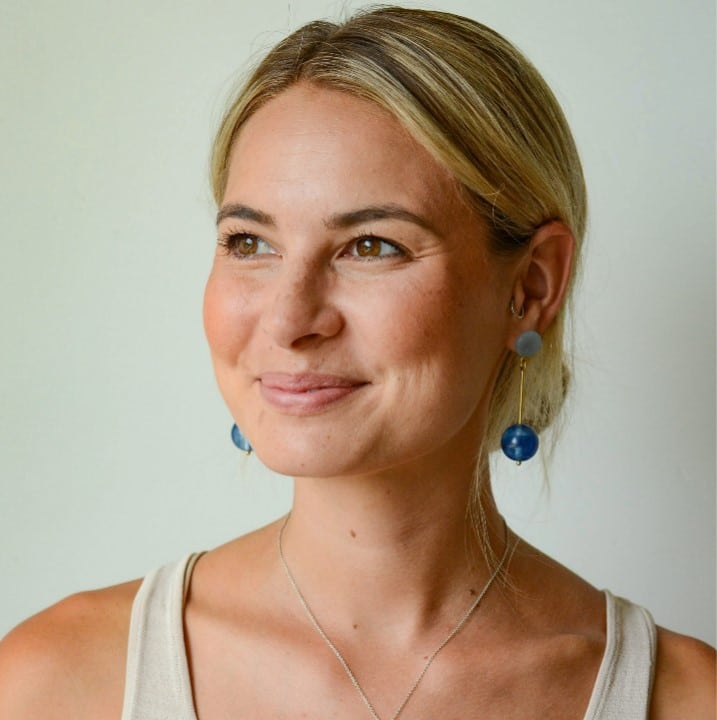
I used the lesson titled, How Red Lines Built White Wealth, in order for students to learn about red lining and institutionalized racism. The mixer lesson was very engaging for students, allowing them to move around the classroom, collaborate with one another, and learn new information that they hadn’t studied before.
As a teacher, the lesson was extremely detailed and made me feel prepared. From introduction activities to exactly how to run the mixer to multiple options for follow up activities, the lesson was robust and meaningful. I always check Zinn Education Project for new and exciting lessons that keep students engaged and speak truth!
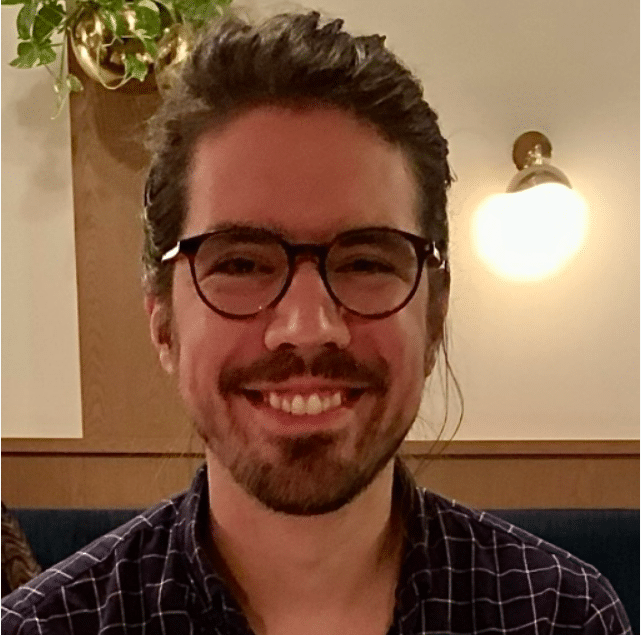
I absolutely love the COINTELPRO lesson which has students look closely at the actual documents leaked to the press detailing the operation. As a class, we have been studying the story of Fred Hampton and his murder. We have looked closely at how powerful Hampton became through class solidarity and the revolutionary politics that brought the Rainbow Coalition together. We also discussed how this made him a real threat to the ruling class and the status quo, resulting in his murder by the FBI.
The lesson on COINTELPRO electrified my students. They could not believe they were looking at the actual documents which we had learned so much about. Further, we were in the process of viewing Judas and the Black Messiah. Late in the movie, when William O’Neal is pressured by the FBI to draw a floor plan of Hampton’s apartment, students immediately pointed out that we had looked at this actual floor plan as a class in our previous lesson.
Student engagement and excitement skyrockets when they see learning as authentic and applicable to today. This lesson helped provide both and more.
While teaching AP U.S. History I strive to make sure my students understand that so many of the events in “history” were not that long ago, and so much of what has happened in our nation continues to shape what happens today.
By talking about and sharing the stories of activists like Claudette Colvin, Fred Shuttlesworth, and some of the other lesser known (but equally important) leaders of the Civil Rights Movement, I try to make their stories come to life. I also make extensive use of the Zinn Education Project’s Reconstruction curriculum in conjunction with the book How the Word Is Passed to show how the federal government has failed in so many instances to address the problems of racism, discrimination, and public perception from the end of the Civil War to the current day.
More than passing the AP exam and earning college credit, I want my students to leave my classroom better citizens of this country and I think this book, along with many other great resources, helps to accomplish that.
I used The Young People’s Climate Conference: Teaching Global Warming to 3rd Graders by Rowan Shafer to teach about climate change, environmental activism, and issues related to land rights. I started by reading the article and lesson aloud to my students. We discussed the different topics covered, including the causes of climate change, the impacts of climate change, and the work of environmental activists. We also talked about the importance of protecting our land rights and the rights of Indigenous peoples.
After reading the article we did a number of activities to help students learn more about climate change and environmental activism. We created posters about climate change, wrote letters to our elected officials about the importance of protecting our environment, and participated in a walk-out to protest climate change. I was really impressed with the way my students responded to this article and lesson. They were engaged and interested in learning more about climate change and environmental activism. They were also excited to take action to protect our environment. I would definitely recommend this article and lesson to other educators who are looking for a way to teach their students about climate change. It is a great resource for teaching about a complex topic in a way that is engaging and age-appropriate.
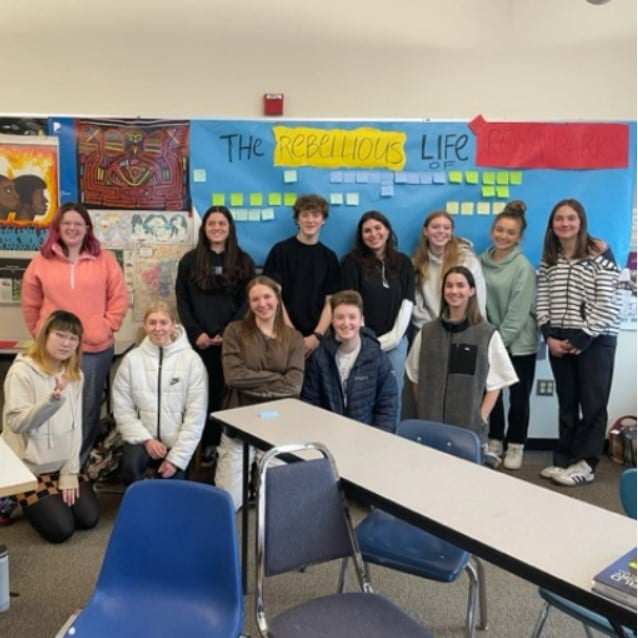
My high school Women’s Studies class students were each given The Rebellious Life of Mrs. Rosa Parks: Young Readers Edition to read in class and at home over two weeks.
Then we followed the lesson by Ursula Wolfe-Rocca that is called “Rosa Parks Lived a Long and Active Life, So Why Is This Timeline So Boring and Short?”
To share what we learned with the rest of the school, we created our own timeline to hang in the social studies hallway for Black History Month and Women’s History Month.
The students and I were struck and moved by Mrs. Park’s lifetime commitment to the social and racial justice movement, which began long before the act of civil disobedience for which she is mostly known. This has sparked curiosity to dig deeper into other stories in history that we only know at the surface level.
The young adult biography format was easy to digest for students and could be assigned as a complete novel to a class or chapters jigsawed for individual students to share back to the whole group.
Last year was my first year teaching World History and I was in need of high quality simulations to help my students understand and engage their critical thinking. The Congo, Coltan, and Cell Phones lesson about Belgian rule of the Congo fit nicely into my unit on imperialism and it helped the students exercise empathy with people in the past.
The mixer presents different historical biographies of real and composite figures, and describes their roles as perpetrators or victims of European violence. The lesson was eye opening, and my students rated it highly. Our discussion after the mixer was insightful, with many students commenting on how topics like colonialism and imperialism still impact their daily lives. Overall the discussion was excellent and my students got to explore and interact with the past in a way that felt very meaningful and relevant.
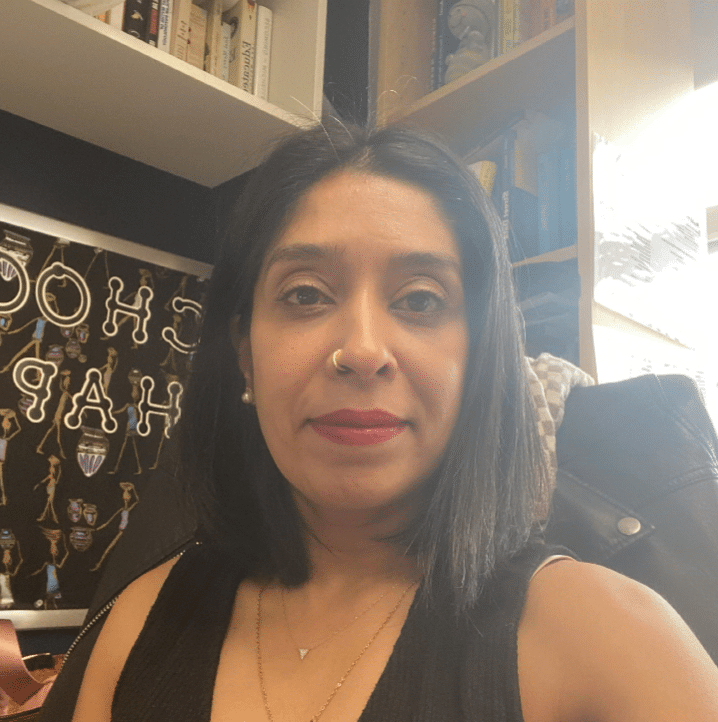
In my capacity as a secondary history educator, I strategically incorporated a Democracy Now! interview clip featuring Rashid Khalidi to provide nuanced context and analysis regarding the ongoing humanitarian crisis in Gaza. Khalidi, a distinguished scholar in Middle Eastern studies, offered a profound perspective that transcended mainstream narratives. The interview not only illuminated historical roots but also shed light on the contemporary complexities of the crisis. As a pedagogical tool, this interview clip became a catalyst for critical discussions in my high school classroom, fostering a more comprehensive understanding of the sociopolitical factors contributing to the situation. By engaging my students with Khalidi’s insights, I aimed to cultivate a critical awareness of diverse perspectives, encouraging them to question dominant narratives and develop analytical skills essential for informed citizenship.
My all time favorite Zinn Education Project lesson is Poetry of Defiance: How the Enslaved Resisted. The primary and secondary sources are perfect for middle school readers at multiple levels. The selections are short and easily digested. I make laminated cards using a different color for each category. I think it is important that the categories include culture, music and family. It introduces middle school students that there are forms of resistance that aren’t immediately obvious.
The culminating project of creating a poem from the sources never fails to amaze me and surprise the kids. I tell them they will make a poem out of the sources and they don’t believe me. The poems always turn out great. We display them in frames outside the classroom. The best part of the assignment is that the students work together to create a single poem. Each on of my classes ends up creating a completely different poem. It is a powerful lesson that gets to the humanity of the enslaved and helps students really engage with the subject. They gather information and then must go into the heads of the enslaved to write from their point of view or on behalf of them.
I have used the Thingamabob Game in both my economics class and my U.S. history class, when teaching about the relationship between production and climate change, or about the history of climate research in the U.S.
My students have always enjoyed this game as they work in their “factories” to produce a good they have chosen. Because I start the game by telling them their goal is to make as much money as possible, they get really into the game and begin creating their own rules to the game as I move around the room exchanging money, resources, and thingamabobs. I have modified the game to add some extra rules, and students enjoy the debate aspect when I have them hold a vote on decisions they should make as climate research begins to “emerge.” The class gets excited, vocal, and competitive.
At the conclusion of the game, we hold a discussion on how the game went. They explain what happened, why they lost or won, and what could have been done differently to avoid climate catastrophe. In my economics class, this offers a great lead-in to their research project where they make recommendations on a contemporary climate issue — and they are often able to relate their research back to the game they played in our conversations about what they are learning.
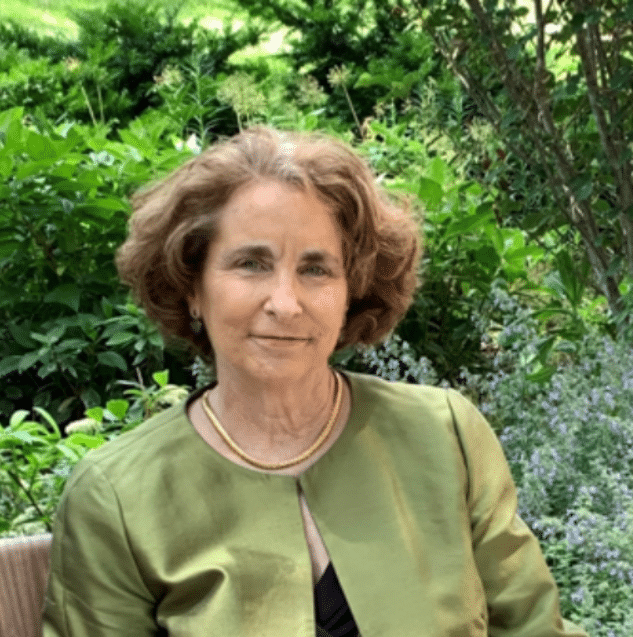
I teach social studies at CCNY’s School of Education and I use the Zinn Education Project a great deal in this course. As a final project, students write a teacher’s guide based on a children’s book that deals with social studies related content. The undergraduates in this course are headed to initial certification for grades 1–6.
I use the book One Crazy Summer by Rita Williams-Garcia as a way to model teaching approaches. The Black Panthers are an integral part of the plot, which allows us to delve into the Black Panther Party. As a culminating event, I use the Black Panther mixer lesson from the Zinn Education Project. We turn the lights down and transform the classroom into a coffeehouse setting with music from Nina Simone playing in the background. My goal in this course is to show all that one can do with teaching social studies.
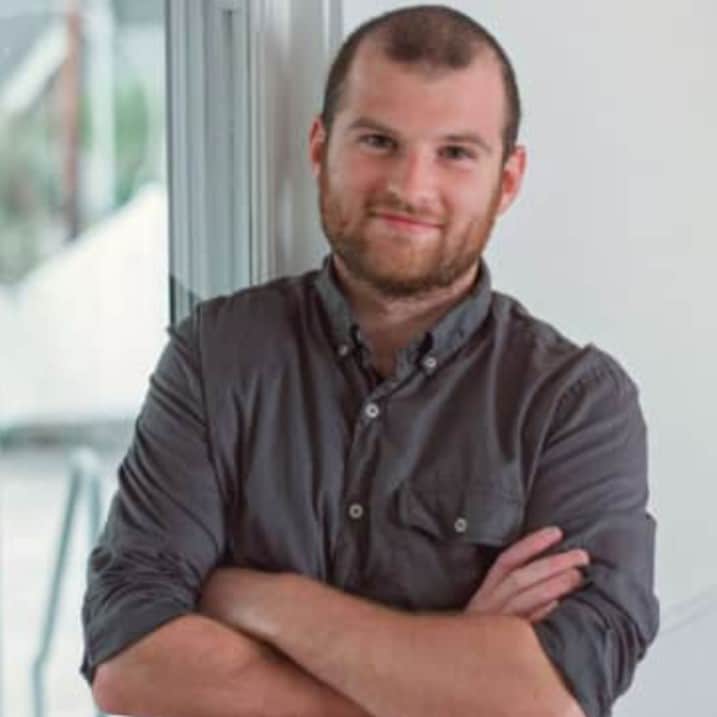
Three years ago I joined a Teaching for Black Lives study group and have been using the Stories from the Climate Crisis: A Mixer lesson and Reconstructing the South: A Role Play ever since. The lessons are engaging and have my students consider perspectives that they would not usually be exposed to. I was even able to take the Climate Change Mixer and use it to create similar assignments for other subjects or lessons that the students liked. In my experience, the Zinn Education Project encourages students to think and problem solve based on their own ability to reason. These valuable skills can carry beyond the classroom and help make for responsible citizens out in the world.
Furthermore, students have enjoyed reading Sugar, Half American, and Paradise on Fire. These stories add visibility and diversity to the classroom — something that is often hard to come by and hard to afford as a public education teacher. Anything and everything that the Zinn Education Project shares with a classroom is a vital component of that class going forward.
The Reconstructing the South: A Role Play lesson was a great way to re-emphasize how history is not just about the past, but also about the present and the future. The students engaged in conversations about landownership and its connection to the “American Dream.”
Additionally, students were able to begin talking about privilege and how land and wealth are connected to opportunities. They were able to discuss generational impacts still felt today that began with Reconstruction. It was powerful to see so many students connect this historical time period to ongoing issues that affect us all today.
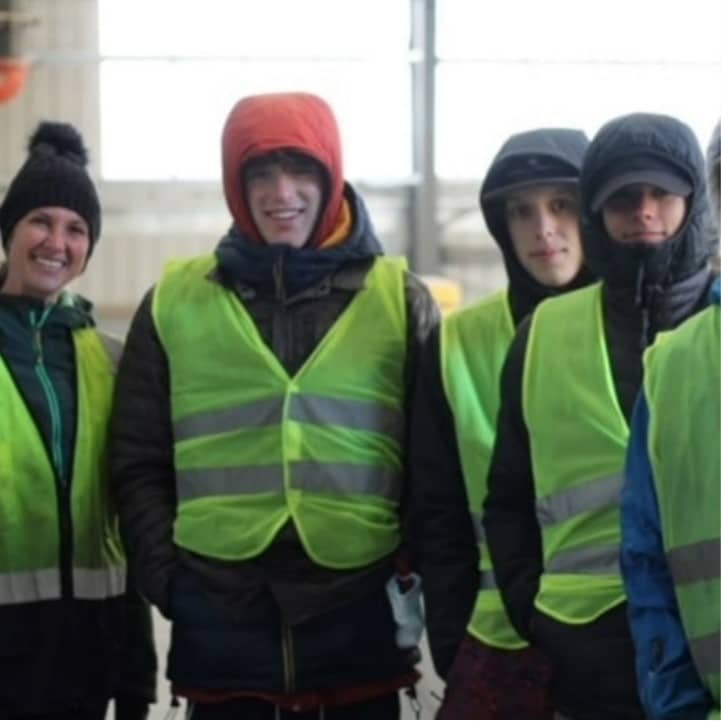
Our school is located in an overwhelmingly white, affluent rural town bordering a national park. It would be an understatement to say our community is isolated from much of the environmental and racial issues plaguing our country today. Not only does The Red Dot of Environmental Racism lesson by Alma Anderson McDonald plainly define environmental injustice for my students, but it also opens their eyes to the fact that these issues are not only playing out in far-flung, developing countries, but also in their own backyard.
In addition, I think the lesson really drives home the idea that environmental injustice is not a thing of the past, but rather something that must be addressed today. It is one more way that our nation has institutionalized racism.
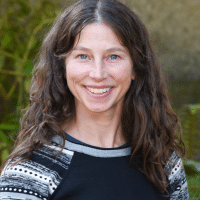
I teach a year-long environmental science course and we spend about a month (or a little more) on a climate change unit. Earlier in the year, students learn about environmental justice as part of the sustainability unit. So, it’s only natural to also include climate justice as part of the climate change unit. Within the unit, students learn about the causes of climate change, earth’s climate history, how climate change is impacting humans, animals, and ecosystems, and the many possible solutions.
I find the Zinn Education Project resources to be invaluable for bringing in real stories of people impacted by climate change and involved in climate change solutions. The Climate Crisis Mixer is a great activity for the students to take on the perspective of another individual. For my students, the stories give connection and meaning to the science that they are learning. I look forward to also incorporating the Climate Crisis Timeline this year to provide more context for historical events and movements.
Every Memorial Day, I use the article What War Looks Like to teach about the real — and unseen and unspoken — costs of war. As Howard Zinn said, “wars, especially in our time, are always wars against children, indeed our children.” I ask the students to think small about big wars and the human costs on both sides of the conflict. I think of the hundreds of thousands of Iraqis displaced, injured, and dead due to the U.S. invasion in 2002.
Recently, I think of conversations that my students and I were having about a potential war in Iran and again mentioned that any war is one against children, women, and other innocents. Our current wars are never only felt by the soldiers fighting them. I believe strongly that for our society to live peacefully with other countries, students must know the human costs of war on every side of any conflict.
Reconstructing the South by Bill Bigelow really stands out as an exceptional lesson on every level, provoking deep conversation among teachers and among the students when run in class.
This lesson manages to accomplish two things extraordinarily difficult to do in the social studies classroom: make history seem undetermined and make the students see themselves as actors in shaping history.
The issues at stake are so profound that the students are invariably engaged and the methodology of stepping back and letting them deliberate lets loose powerful and unpredictable energy.
Leaders and conflicts invariably emerge. Students’ true personalities come to the surface and the line between radicalism and conservatism in politics becomes clearer than ever before.
I use the Zinn Education Project in my classroom quite often. My favorite lesson is entitled Whose “Terrorism”?, which gives students perspective on what terrorism is and how it works. The lesson lets the educator teach from the perspective of the other, which is crucial to the classroom of today. A great resource which I plan on using more.
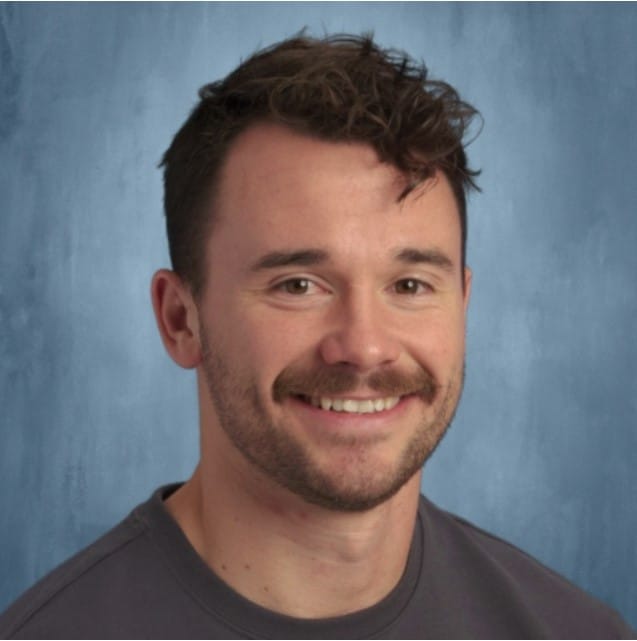
With teaching U.S. history in a different country, we are always striving to find connections and impacts that apply to our local contexts. With Clint Smith’s How the Word Is Passed, our class found a wonderful way to connect contested histories both in the United States and Canada.
In using the How We Remember lesson plan, our students engaged with Smith’s writing and started to explore the spaces he visited where the history of enslavement is either remembered or forgotten.
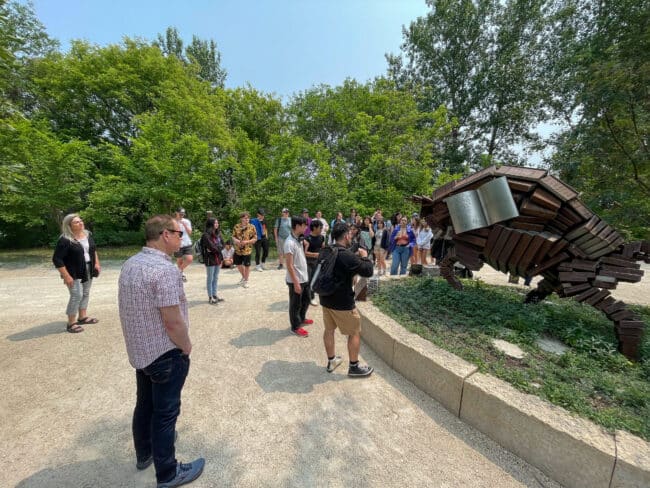
The Métis Walking Tour
Our students became ‘curators of difficult knowledge.’ They were tasked with coming up with a way to both uncover the hidden histories of a particular place, while also creating a site of remembering that honours true history, and invites learning and community.
As a wrap up to their projects, the students connected their learning by travelling to The Forks in Winnipeg, Manitoba (a contested historical site) to see how the past is remembered in a Canadian context. Leading our workshop was an Indigenous Education Leader from Louis Riel School Division. He compassionately led our team through the Métis Walking Tour. We learned about the rich Indigenous histories as well as the history of colonization in the area. The message was clear, first we must learn what has been deliberately forgotten, then we must find a way to move forward, collectively for a better future. Thank you to Louis Riel School Division!
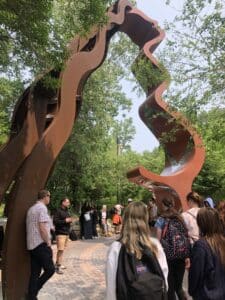
The Forks in Winnipeg, Manitoba
As a rural K–12 school, we rarely get opportunities to connect with students and teachers from urban schools in our province. In order to bridge that divide, we collaborated on this project with Mr. Jared Suderman from Glenlawn Collegiate in Winnipeg. Our students met up prior to the tour and were able to share a meal together and create community prior to engaging with the tour.
In my opinion, this was a rich learning experience that taught the whole team about the complexities of presenting history in public spaces!
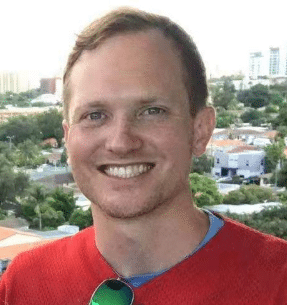
The lesson Congo, Coltan, and Cell Phones worked great in my 12th grade Contemporary World Studies course. I had recently read the great book King Leopold’s Ghost by Adam Hochschild and I wanted to work Belgian atrocities in the Congo — and European colonialism in Africa more generally — into my teaching. This lesson was perfect in that it covered key ideas from history, but also made the story current. The activity is super engaging!
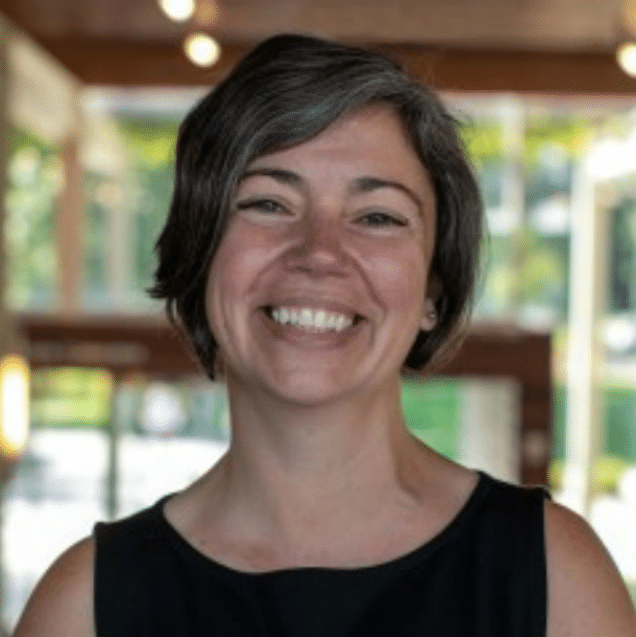
During our second unit in seventh-grade English this year, we read Kekla Magoon’s novel The Rock and the River. As we explored the setting of the novel, 1968 Chicago, and learned more about the key role the Black Panther Party played during the Civil Rights Movement, we turned to Magoon’s nonfiction book Revolution in Our Time. I continued my search for other reliable, quality resources that would enhance the student experience and outcomes and came across Zinn Education Project lesson What We Don’t Learn About the Black Panther Party — but Should. Up to this point in their school experience, middle school students’ knowledge of civil rights leaders is often limited to the contributions of Dr. King, Malcolm X, and Congressman John Lewis. I was glad to be able to use teaching materials that widened the scope of their knowledge and understanding.
I used the lesson and the materials included to create a learning experience through which the students not only learned about key figures in the Black Panther Party but also better understood its role during that particular era. The materials and the lesson flow gave students opportunities to learn about better-known figures like Bobby Seale and Huey P. Newton while building background into lesser-known activists. It also allowed them to get a better understanding of the Black Panther Party’s reach beyond California and even the United States. More importantly, it helped the students better connect the events then with the events we live through now, and the actions people took then with the actions we can take now. The interactive nature of the lesson increased engagement while allowing for growth through empathy as well.
Based on the quality of this lesson and especially the impact it had on my students, I highly recommend Zinn Education Project materials. I know I will return to them often.
Recently, in teaching my students about the Civil Rights Movement, I used the lesson Teaching SNCC: The Organization at the Heart of the Civil Rights Revolution. My students were unfamiliar with the organization and the topic. The Freedom Rides are often forgotten when teaching the Civil Rights Movement.
This lesson plan allowed students to assume roles, address problems, and create solutions. It also includes a writing prompt to engage them in a first person account. The lesson opened their eyes to the struggle and bravery of these groups. The lesson showed my students how SNCC registered voters and impacted the movement, and it developed my students’ knowledge and skills beyond what’s offered by their textbook.
In U.S. history with my 11th-grade students, we began the year by corroborating Columbus’s story and used texts from A Young People’s History, traditional textbooks, videos, and other primary sources. They were shocked and surprised at his actions but also surprised that they hadn’t learned this information before.
A perfect culmination to this set of lessons was The People vs. Columbus, et al. The students used their various resources to craft an argument and counter-arguments, and we had a debate about who was responsible for the genocide. They passionately took on their roles and characters, using textual evidence and thinking critically. It has been one of their favorite lessons since the school started and I know they want to participate in more debates!
This lesson perfectly combined speaking, listening, reading, and writing skills, all so that students could have a better understanding of the past.
Over the years, I have struggled to find a way to teach Reconstruction in a manner that is meaningful, engaging, and reflective. One of my first attempts included the use of Foner’s massive text on Reconstruction. I’ve also done screenings of Henry Louis Gates’ fantastic documentary series on Reconstruction. But I haven’t had success in getting students interested in understanding how and why Reconstruction failed — until I used the lesson Who Killed Reconstruction?: A Trial Role Play. Not only did my students love the lesson, I was able to implement the lesson with little outside work.
Thank you for making this history approachable! This is just one of many Zinn Education Project lessons I’ve used over the years, and is by far at the top of my list — right up there with the COINTELPRO lesson. I love that I can share my experiences using ZEP lessons with colleagues and know that they will have great outcomes with their students as well.
During a civil rights unit, I used the Black Panther Party mixer activity in conjunction with our lessons on the Black Panther Party. The students were familiar with mixers, but this particular mixer really grabbed students’ attention and interest. The number of roles, the incredibly diverse experiences, and the connections to other social movements allowed all of my students to see themselves and their history in the activity. It was a powerful activity that students engaged deeply with and seemed to truly enjoy.
I used Congo, Coltan, and Cell Phones: A People’s History lesson plan. It was absolutely awesome! The students were so engaged in the role play and the trial, and even made comments about how much they learned and enjoyed the lesson. I can’t wait to use it again next year.
I have used the “Independence or Catastrophe” resource coupled with a lecture for more background in my class with great success. Students are eager to discuss and learn more about the larger historical context and challenge corporate media narratives that do not align with their values as young people. As a recent Gallup poll suggests, students are challenging the narrative in large part due to the work of Palestinian journalists on the ground in Gaza through social media.
While I do have concerns about being doxed or having complaints laid upon me, my job as an educator is to inform young people about the world around them and this development is one of the most significant historical tragedies of the century. It cannot be ignored or put aside. Young people deserve the space to learn, unlearn, reflect, and build their world views in schools.
Thank you for providing sources and standing with teachers in this time.






Twitter
Google plus
LinkedIn